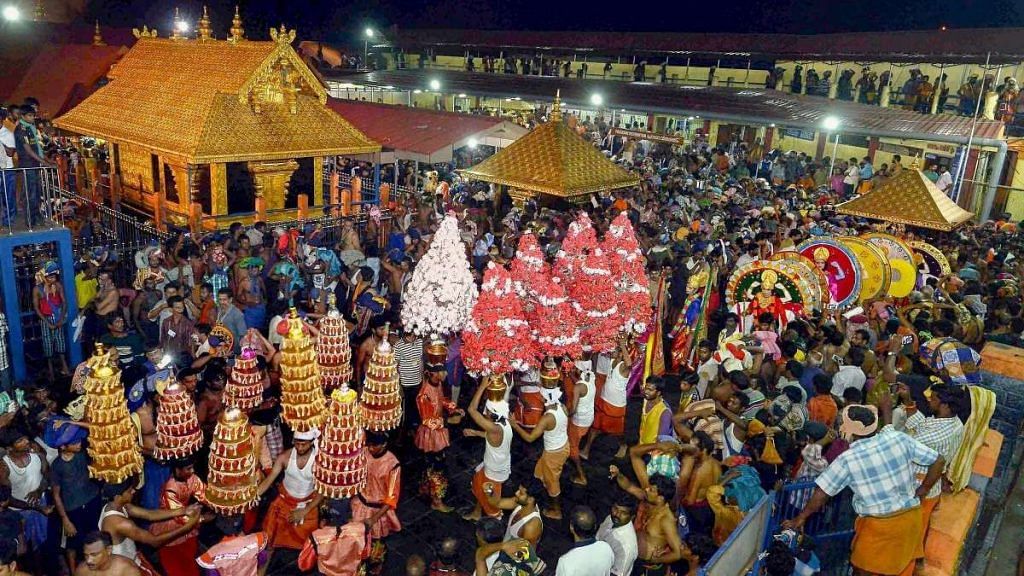A plea was filed in Kerala High Court in 1991 after a photograph showing a rice-feeding ceremony at the Sabarimala temple was published in a newspaper.
Bengaluru: When the Supreme Court lifted the ban on the entry of women into the Sabarimala temple, S. Mahendran, 54, says he was among those deeply aggrieved by the decision.
For it was on Mahendran’s petition, converted into a public interest litigation, that the Kerala High Court, back in 1991, barred the entry of menstruating women into the hill shrine. The verdict ensured legal ratification for an age-old custom.
The Ayyappa temple in Sabarimala is believed to be over 900 years old and the ban on entry for young women was an unwritten code.
The photograph
A resident of Changanassery in Kerala, Mahendran says he had moved the high court based on a photograph that he had seen in a local newspaper.
Mahendran claimed that the photograph was from the first rice-feeding ceremony of the grand-daughter of former Travancore Devaswom commissioner Chandrika. The photo, he says, showed women relatives present at the function in the temple.
“I found it an insult to my tradition and it hurt my religious sensitivities. Women are not supposed to be in the temple,” Mahendran told ThePrint.
“I decided to file a petition in the high court but at that time, I had done it on my own. I did not even have a lawyer; the court provided me one.”
Mahendran said he was later backed by several other organisations such as the Nair Service Society (NSS) and the Ayyappa Seva Sangam.
Also read: On Sabarimala, blame out-of-touch Indian liberal elite not the court
The ban
Based on the photograph that Mahendran submitted in court, the case was taken up as a PIL. The Women’s Lawyers Federation of India contested Mahendran’s plea on the grounds that it violated fundamental rights under Articles 15 and 25 of the Constitution. Preventing women from entering the temple also amounted to gender discrimination, the federation had argued at that time.
After hearing the arguments of the state government, the Travancore Devaswom Board and the petitioners, the two-member bench of the High Court, consisting of Justices K. Paripurnan and K.B. Marar, enforced the ban.
“The restriction imposed on women aged above 10 and below 50 from trekking the holy hills of Sabarimala and offering worship at the Sabarimala shrine is in accordance with the usage prevalent from time immemorial,” the high court observed. “Such restriction imposed by the Devaswom Board is not violative of the articles 15, 25 and 26 of the constitution of India.”
Mahendran said that the high court decision was a huge victory for the devotees of Lord Ayyappa.
Also read: Girls, why do you want to go to temples like Sabarimala at all?
‘Unhappy with the SC’
Now, 27 years on, Mahendran says he is unhappy with the Supreme Court’s decision to overturn the ban.
“The Supreme Court decision is not the right one. I will respect it but it definitely is against our centuries-old practices,” he said.
The 54-year-old also feels that the women who have declared that they will enter the temple based on the court order are not “true Ayyappa devotees”.
“Forcibly entering the temple is a sign of defiance to traditions,” he says, adding that the tradition of banning women was there for a reason and that nobody can change the faith and trust that people have in the Sabarimala temple.
